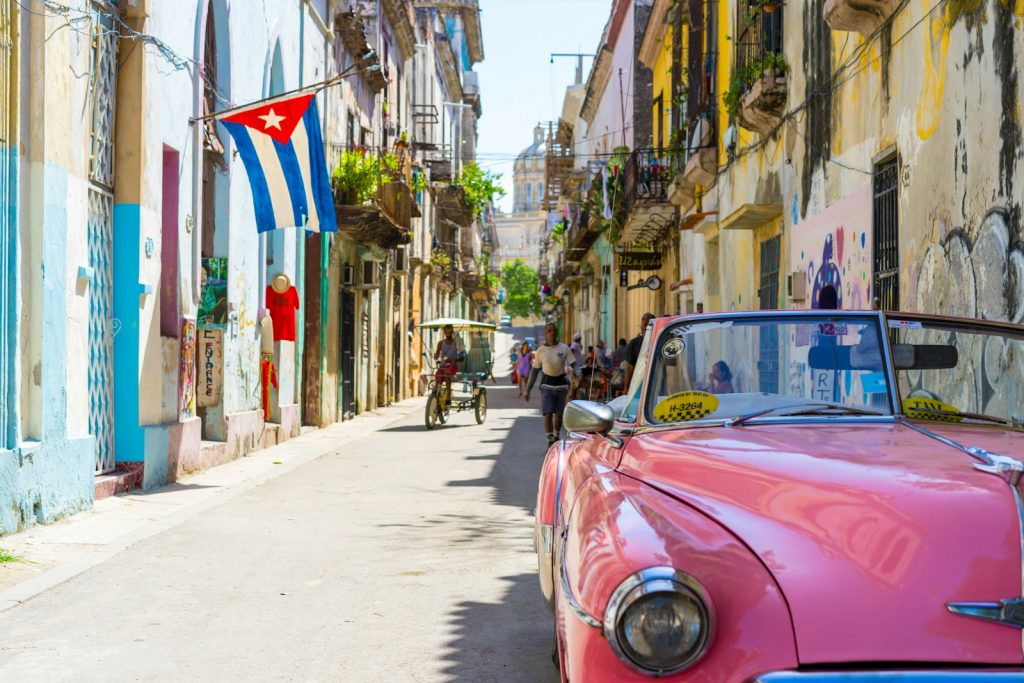The healthcare system of Cuba is well recognized internationally for its quality and competence. Despite awfully limited resources and severe impact caused by the economic sanctions enforced by the United States for more than five decades, Cuba has been able to ensure access to healthcare for all strata of the population and secure results similar to those of the developed countries. People’s rights to medical services are protected by the country’s constitution also.
In her visit to Havana in July 2014, Margaret Chan, Director-General of WHO, said, “Cuba is the only country that has a healthcare system closely linked to research and development. This is the way to go, because human health can only improve through innovation.” She added that the world should replace the curative model with the preventive measures following the model of the island. (Granma, 2014)
Cuba is the best performer in the Third World with an infant mortality rate of 4 per thousand births. (World Bank, 2016) The rate is even lower than it is in the United States. With a life expectancy of 78.45 years, Cuba is one of the best performers in the world. On average, Cubans live 30 years longer than their Haitian neighbors. (teleSUR, 2015)
The healthcare system provides services around the world
Between 1961 and 2008, 38 to 40 thousand Cuban health professionals of which 15 to 17 thousand were doctors, served in 68 to 77 countries as Cuba claims. (Werlau, 2013)

Cuban health professionals are providing services in developing countries around the world since 1963. In 2004, Fidel Castro and Hugo Chávez launched a vision restoration programme called Operation Miracle for the poorest of the earth. The vision of 3.4 million people in 31 countries has been restored through this Cuban international initiative. (JR., 2014)
About 165 Cuban institutions take part in Operation Miracle, which has a network of 49 ophthalmological centres and 82 surgical units in 14 Latin American countries – Bolivia, Costa Rica, Ecuador, Guatemala, Guyana, Haiti, Honduras, Grenada, Nicaragua, Panama, Paraguay, Saint Vincent and the Grenadines, Venezuela and Uruguay.LABIOFAM, Cuban Chemical and Biopharmaceutical Research Institute, commenced a vaccination programme against malaria in 15 West African countries in 2014. (Lamrani, 2014)
The Latin American School of Medicine (ELAM) of Cuba has graduated more than 20,000 physicians from more than 123 countries since its commencement in 1998. According to Ban Ki-moon, Secretary General of the UN, ELAM is “the world’s most advanced medical school.” He acclaimed Cuban doctors working in different countries, including those in Haiti: “They are always the first to arrive and the last to leave. Cuba can be proud of its healthcare system, a model for many countries.” (Lamrani, 2014)
The World Health Organisation, referring to the achievements made by Cuba in its health sector, say that with the right political will a third-world country can also ensure health services to its people from all the strata of its society. (Lamrani, 2014)
Healthcare services for all Cubans are free, though medication is not, even family members taking care of the patients are provided with food. According to the WHO Indicators, 2011, 10 percent of the country’s GDP was expended for healthcare services to its countrymen. (Xie, 2014) Cuba has the highest physician to patient ratio in the world. (Merz, 2005) Cuba’s achievement in its healthcare system is much more than expected in the context of the stringent trade embargo it is facing from the USA since 1961.
The key to Cuba’s healthcare miracle is its 498 polyclinics around the country where thousands of patients are being served. Each of the polyclinics serves a catchment area of 30 to 60 thousand people. It also works as the hub of 20 to 40 neighbourhood based doctor and nurse offices. Each of the physician’s offices cares for about 2,500 patients at the community level. The system was established in the country in the 1970s. They provide 22 different services including rehabilitation. About 800 to 1,000 patients receive services from each clinic daily on average. The clinics have started to work on capacity building and quality control of the health institutes in the respective communities. (World Health Organization, 2008)
It had 6.723 physicians per 1,000 people in 2010. (World Health Organization, 2015) Cuba has a 155:1 patients per doctor ratio which is the lowest in the world while the US has 396:1. In 2005, Cuba had 70,594 doctors increased from 6,000 before the Revolution of which about half escaped the country after 1959. In 2009, Cuba spent $503 per capita on healthcare while the USA expended about 15 times more. (Souers, 2012) Cuba established medical schools in each of its 23 provinces by 1998.
In the 1990s, after the collapse of the Soviet Union, Cuba incorporated Complementary or Alternative Medicine (CAM) or Natural and Traditional Medicine (NTM) to sustain its healthcare services to its people when the country faced tremendous financial hardships the period of which is called the “Special Period” in Cuba. Though CAM or NTM was commenced because of the financial hardships, Cuban experts later claimed that the practices helped make their healthcare system better. (Appelbaum, et al., 2008) Infectious diseases have been replaced by chronic diseases in the country as the principal causes of death. The rate of child mortality decreased to 6.2 per 100,000 in 2004 from 50 per 100,000 in 1959 and life expectancy at birth increased to 75.5, which is similar to that of the USA. (Souers, 2012)
Cuba is also successful in building an efficient and productive biotechnology industry. About 40 products developed by the industry are being used. It produces 33 vaccines, 33 anti-cancer medicines, 18 drugs for cardiovascular disease treatments, and 7 products to treat other diseases. Cuba claims that the industry can meet the rigorous criteria of the European Union and the USA. (Haseltine, 2012) The country earned $300 million exporting biotechnology products in 2005. Cuba meets 80% needs of the pharmaceutical products produced by the industry. (Cárdenas, 2009)
Cuba’s achievements in public health
Cuba provides 34,000 health professionals to 52 developing countries. The country provides medical education to African and Latin American students free of cost. Cuba spends about $320 per capita amounting to ∼16% of the country’s GNP. It provides one physician per 120-160 families. It has the second-lowest infant mortality rate in the Americas and 20% below the rate of the US since 2002. It has the lowest AIDS rate in the region. Cuba was the first country in the world to be able to eradicate polio and measles in 1962 and 1996 respectively. The country has been able to reduce its mortality rate by 45% from cardiovascular diseases. (Cooper, Kennelly, & Orduñez-Garcia, 2006) According to the World Health Organisation, life expectancy for males was 77 years while it was 80 for females in Cuba in 2013.
Conclusion
Bangladesh is not a socialist or communist country, so the Cuban state policies may not be applicable to Bangladesh in full. However, the strategy they have employed to ensure people’s healthcare in a sustainable way may be replicated to some extent to provide better, cost-effective, self-reliant and dependable services to build a healthy nation.
Bangladesh needs to increase the ratio of doctors per thousand population. Community health clinics should be strengthened with facilities and required professionals, the doctors should live with their designated communities, and the budget of healthcare and medical education has to be increased to make required services efficient and effective. Self-sufficiency in the production of medicinal health products is also very important.
This article was first published in the Dhaka Courier on 22nd March 2017.


